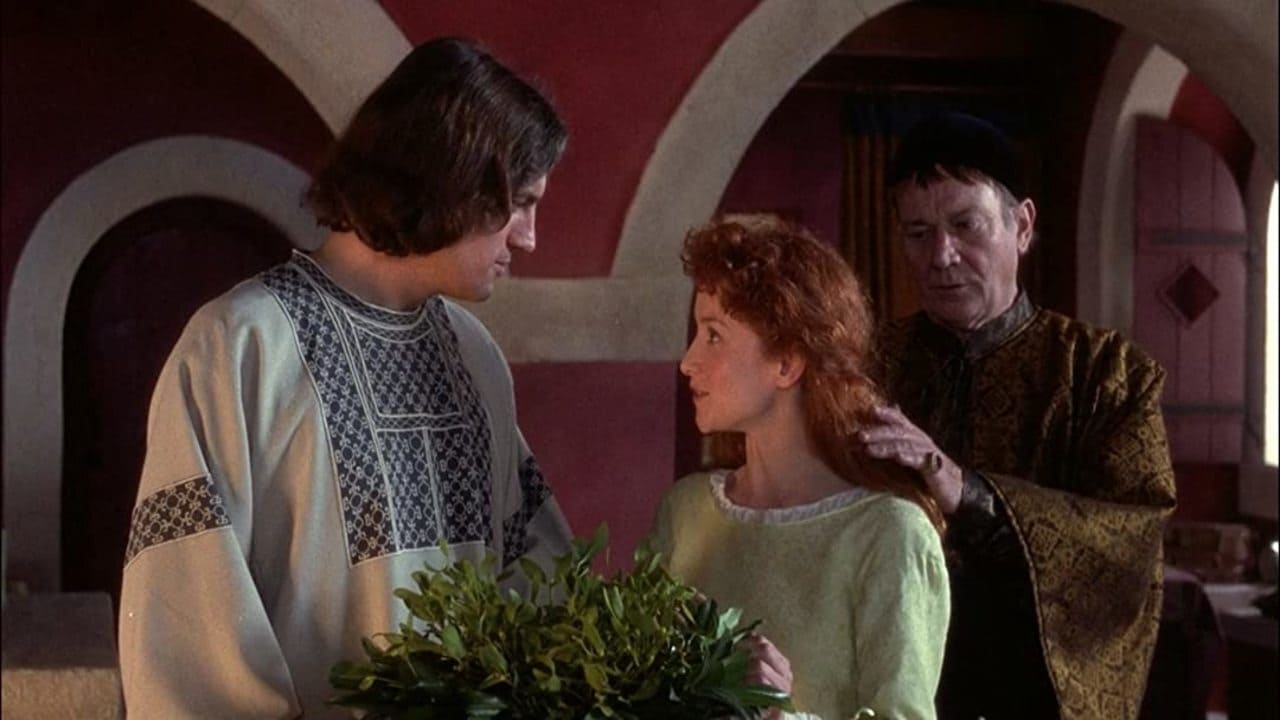

To me, this movie is perfection.
... View MorePurely Joyful Movie!
... View MoreBoring, long, and too preachy.
... View MoreA great movie, one of the best of this year. There was a bit of confusion at one point in the plot, but nothing serious.
... View MoreGood enough movie, great story. Abelard and Heloise share one of the great love stories of history. Throw in the religious environment of the middle ages, the clergy's sacred vow of chastity, and a life long enforced penitence, not to mention the unmentionable punishment for any male, and you have a worthwhile film if at all well-made, which this one is. It's a shame that more meaningful movies like this one can't be made available to the American public. The U.S. version has been cut of some sexual content to avoid an R rating, but the love scenes are still erotic and moving. Period costuming also add to the color and enjoyment of 'Stealing Heaven'. As an added bonus, you get philosophical and theological argument and debate. A really worthwhile film overall.
... View MoreSpoilers. Abelard is handsome and a great teacher. Heloise (I can't find those accents anywhere!) is a slender passionate young woman with penetrating blue eyes and a mop of Irish-looking wiry reddish hair. "By custom," teachers are supposed to be celibate. The two meet. Uh-oh. Trouble rears its ugly head. By what turns out to be a stroke of really bad luck, Abelard winds up living in the house of Heloise's uncle and takes her under his wing to, um, tutor her. She's not what you would call inhibited in expressing her affection for him. There are a few challenging questions from her and a few surprised and charmed responses from him, and the next thing you know they're in the kip together, rolling around naked and rutting like two wart hogs in heat. Abelard never does show very much doubt when it comes to doffing the customs of the time, or the costumes either for that matter. Alas, Heloise is pregnant and is sent away to live with Abelard's sister. He remains behind, still teaching, protected by the Bishop who wants this academic magnet to continue drawing in droves of students. But there's a villain in this piece. Heloise's uncle sees to it that the same thing is done to Abelard as was done to Paul Newman in "Sweet Bird of Youth," the play, not the movie. I haven't read the written material this movie is based on, so can't compare the two, but the plot at this point seems to get pretty twisted. Heloise seems determined enough to live with Peter, even in his emasculated condition, but he decides that he wants to become a priest and would like her to join the church as well, though a less likely nun is hard to imagine.Later they are thrown together again -- as priest and nun -- as part of a group building a church in the wilderness. Then they're separated for good.It all seems so distant in time now, so far away, so "medieval." But it really isn't. Not if you've been around for a while. It wasn't that long ago in the USA that "illegitimate pregnancy" constituted a scandal. (Vide, "A Place in the Sun".) Abortions were illegal. (Not that that stopped them from being performed, to the tune of about one million a year.) It was in the 1950s that an American woman made headlines by traveling to Sweden in order to have a legal abortion. Women of means who became pregnant out of wedlock had to leave town on the pretext of an extended visit to a relative in order to bear a child. (Arguments in favor of multicultural curricula should take diachronic differences into account as well as geographic ones; that way we can get back to basics. You want to experience the "other"? Read The Iliad.) I congratulate the people who made this film. (They seem to include performers like Susan George and Simon MacCorkindale.) What they've done is produce an intelligent tale of life in medieval Europe in which the clashes involve philosophies, not armies. It's a bold stroke, making a movie like this to be released to a generation grown up on violent computer games. Abelard and Heloise are part of our cultural heritage. Their names are linked, like Beatrice and Dante, Laura and Petrarch, Romeo and Juliet, Hero and Leander, Narcissus and Narcissus. And this film about Abelard and Heloise is engaging too, not merely instructional. I'm not exactly sure what a "steamy bodice-ripper" is. If it's anything like the abysmal "Mandingo," or the blockbusting "Gone With the Wind," then this isn't an example of it, although the nudity is enjoyable. I commend too the production designer, an always underrated artist. There's a recent tendency for pictures about this period to be gloomy and dank, but here we have refreshingly brightly painted interiors, walls with wispy pastel murals, and the director gives them their due. Wardrobe too is convincing, without being in-your-face about it. I never realized how quickly and easily one could slip out of all those billowing robes and things until I saw the love scenes here. Yes, all around, sad but a good show.
... View MoreRarely does a period piece follow so faithfully it's sources. This film brings Marion Meade's novel to life with amazing precision. Based heavily on the letters of Heloise to Abelard after they both took holy orders, the story encapsulates the warring philosophies of the era against the backdrop of the religious fervor of the middle ages.If you have read the "Letters" of Heloise, you will be drawn into this faithful characterization. If you haven't read them - you'll want to! Beware though - her letters are hot and "smutty". Lanwench's description of this movie as a "bodice ripper" just reveals that s/he's never read the historical sources.The drawback to this film is that the character of Abelard is drawn mostly from Heloise's point of view without the tempering of his own letters. He comes off quite more romantic than his letters reveal.The sets and costuming are in period with so few anachronisms that even a medieval scholar can sit back and enjoy the film.One of my all-time favorites
... View MoreThis romance is based on the real story of two lovers separated by the Catholic Church but bound by their hearts.Set in Paris during the building of Notre Dame, young Heloise is brought from a convent to live with her uncle, a solicitor for the cathedral building fund. Heloise is well-educated and spirited, a dangerous combination for a woman in this time. She meets Master Abelard, a teacher at the cathedral and they fall in love despite his vow of celibacy.The scandal of their love explodes when Heloise becomes pregnant. The sets and costume are quite convincing--if only the actors sounded more French than English.This is one of my favorite films despite the fact I have a book of some of Abelard's writings in which he displays a near-contempt for Heloise and those around him. A far cry from Derek de Lint's character.
... View More